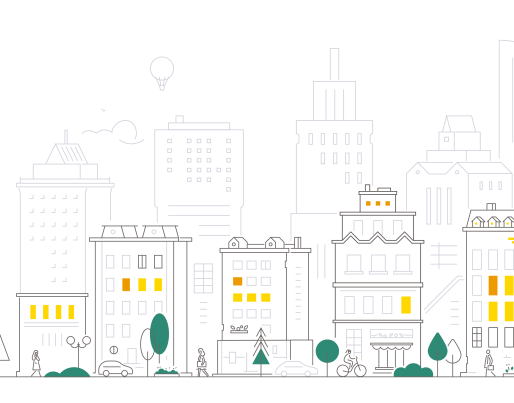
Promoting 'multiple benefits' in smart city projects

Promoting 'multiple benefits' in smart city projects
Finding what potential benefits locals value the most in their city can help city planners communicate their work.
According to European Commission, buildings are responsible for 40% of EU energy consumption, and that nearly 75% of people live in urban areas in the EU (or only 25% in agricultural areas).
It’s vital, then, that Europe’s cities learn to adapt to and mitigate the effects of climate change for locals. Everyone has their role to play: from researchers to local government to community leaders.
But few individuals feel responsibility for tackling climate change; according to EU survey data, a majority of Europeans think that the European Union (56%), national governments (56%), businesses and industry (53%) are responsible for tackling climate change. Only 35% hold themselves personally responsible.
Communication gap?
Researchers and city planners know well that raising that number involves both better communicating their work and understanding what locals value in their city. Newer generations of researchers are especially aware of the problems. 'Presenting a cutting-edge project isn't sufficient if it fails to be embraced and fully understood by both end-users and other interested parties (stakeholders)', says Irene Bertolami, Junior Researcher at EURAC. 'I've always thought that there was a gap in communication with citizens.' Closing that gap means learning which aspects of research or urban initiatives people value the most. For example, it can be difficult to accept local governments completely refurbishing their buildings to make their district energy efficient.
Showing stakeholders the potential benefits they value most can determine whether these changes happen at all. Every project has intrinsically one or more main goals, but whether intentional or not, it will also include unintended advantages (also known as co-benefits). The concept of multiple benefits goes beyond this, since groups all the benefits considering them without any sort of prejudice. For example, a research project may focus on planting trees to cool buildings in summer, but also briefly mention that it can make the street look better and thus have a healthier lifestyle. These co-benefits might lead to locals changing their minds and enthusiastically embracing energy transition projects. Leaving them under-researched or not even communicated could lead to slower acceptance in some communities.
This approach is quite well established in terms of the energy efficiency of buildings, but still to be explored for research in urban sustainability. In the case of cities, it can also be difficult to evaluate the benefits for something as broad as an entire neighbourhood.
Urban sustainability projects
To see how best to evaluate these multiple benefits, it was turned to two EU-funded urban sustainability projects ARV and Prolight, and a global discussion platform on Positive Energy Districts, IEA-EBC Annex 83.
The research first involved a literature review of previous smart city and positive energy district projects. This helped create a longlist of the most expected multiple benefits derived from projects similar to the studied ones. This longlist was then discussed with project partners in both online and in-person workshops During these sessions, each participant was required to list all the expected benefits of the project's implementation on an online board.
However, the considered European projects are made up of several case studies that align with a common framework but possess unique characteristics due to their specific application contexts. That’s why the methodology described specifies that the list of multiple benefits should be tailored specifically for each case study with the help of local partners. Local stakeholders will receive a questionnaire with a customised list unique to that situation. Through the questionnaire, the respondents are asked to pick out the most significant benefits based on their role in each case study.
The questionnaire uses the Best Worst Scaling technique, which asks people to rate the most and least essential items from a random selection from the shortlist. Repeatedly selecting the best and worst from multiple random lists gradually allows the best factors to rise to the top.
So far the questionnaire went through a testing phase involving project partners, Positive Energy Districts experts, and a group of students from Politecnico Di Torino. Results were then compared to see what benefits were most common among all groups.
The research found that benefits related to the environment (e.g. increased energy efficiency) were some of the highest ranked, followed by economic benefits (e.g. reduced energy costs). Social benefits (e.g. reduced energy poverty) were the most common benefits though were scattered throughout the rankings, while governance benefits were always near the end of people’s rankings.
These results provide insights on which multiple benefits to promote to particular stakeholders and what to expect more from certain types of urban projects.

